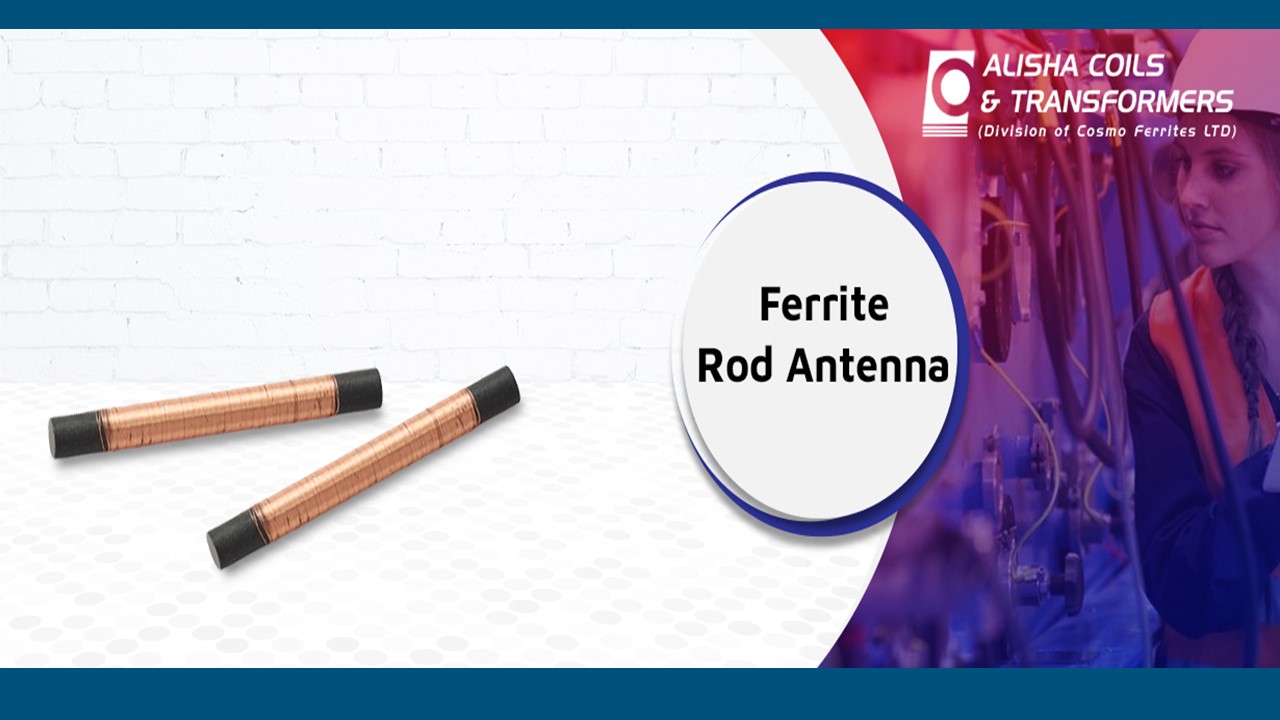An Introduction to Ferrite Rod Antenna - PowerPoint PPT Presentation
Title:
An Introduction to Ferrite Rod Antenna
Description:
Ferrite rod antenna is a small magnetic loop antenna used in AM broadcast transistor radios for medium & long waveband reception and RFID applications. It is designed with a rod or bar made of ferrites and includes a coil wound around the ferrite rod with the help of a variable tuning capacitor in the radio circuitry. – PowerPoint PPT presentation
Number of Views:8
Title: An Introduction to Ferrite Rod Antenna
1
(No Transcript)
2
Overview
- Ferrite rod antennas are tiny magnetic loop
antennas that are utilised in AM broadcast
transistor radios for medium and long waveband
reception as well as RFID applications. It is
constructed using a ferrites rod or bar and
contains a coil coiled around the ferrite rod
using a variable tuning capacitor in the radio
electronics.
3
How does Ferrite Rod Antenna work?
- Its performance and frequency responsiveness are
limited due to losses in the ferrite core. As a
result, the antenna functions at frequencies
ranging from 2 to 3 MHz. - A ferrite rod antenna is mostly used to receive
lower frequency transmissions ranging from 50hz
to 50khz. It functions as transmitting antennas
for applications that require minimal power and
efficiency. If the power levels are high, the
ferrite rod may experience heat dissipation
problems. - The tiny size and convenience, on the other hand,
contribute to its advantages and raise its demand
for RFID applications.
4
Design
- The antenna may also be constructed using other
parameter combinations. As a result, a shorter
and broader coil with more turns can provide the
same output voltage as a longer and thinner coil
with fewer turns and greater magnetic
permeability. - Because each arrangement will employ various
materials, the price may vary. The major goal is
to deliver a target output voltage and power
while keeping restrictions like physical size and
Q factor in mind. This might assist you in
determining the optimum configuration that has
the lowest cost and meets all design limitations.
5
Ferrite Rod Antenna Parameters
- The two most significant characteristics of a
ferrite rod antenna are the tuned circuit's 'Q'
and the radiation resistance. These
characteristics govern where the antennas can be
used as well as the design of the circuits that
utilise them.
6
Importance of The Q Parameter
- The 'Q' or Quality parameter of the circuit
design in which the ferrite rod antenna coil is
positioned is a significant issue. To perform
efficiently, the circuit must have a high Q at
the frequencies where the antenna would operate. - If the frequency is a few hundred kHz, a medium
permeability material will be put in the ferrite
rod antenna to assist maintain a Q value of 1000
or so. At this point, the antenna must be tuned
to function at a higher frequency. - Because the magnetic circuit is open, the Q value
of the ferrite core in the rod will likewise be
bigger than the material value. This number is
proportional to the maximum operational distance.
7
How is it useful for Radiation Resistance?
- If the antenna is not ferrite, it has a small
loop that is less than a wavelength in length and
has a low radiation resistance. As a result, the
losses caused by wire resistance would be
exceedingly large. - To address this, a ferrite core is put in the
coil to boost the radiation resistance of the
ferrite rod antenna. This lowers the radiation
resistance and reduces resistive losses caused by
the wire.
8
Continue
- While the ferrite rod is helpful for increasing
radiation resistance in antennas, it introduces
additional losses. The energy necessary to alter
the magnetic alignment in the granular structure
of the ferrite core is absorbed by the ferrite. - If the frequency is increased, the number of
changes increases, and hence the losses increase.
As a result, ferrite rod antennas are only
employed at low frequencies and not at higher
frequencies.
9
Conclusion
- In terms of efficiency, frequency, and tuning, a
ferrite rod antenna is a solid choice. Their
popularity and demand as RF antennas for portable
radios is increasing worldwide. - Alisha Coils Transformers designs Ferrite Rod
Antennas using quality and new technology to give
our customers with customised solutions. Our
strength is in-house ferrite core manufacturing,
which allows us to assure product quality and
timely delivery.
10
Thank You
- If you need more assistance, you can feel free to
connect with our experts who will take you
through our wide range of ferrite products
available for several applications. Contact us to
learn more.
sales_at_cosmoferrites.com
www.cosmoferrites.com
91-11 4939 8800































